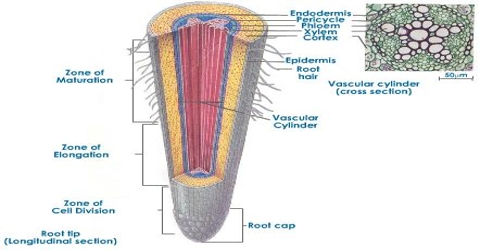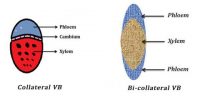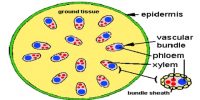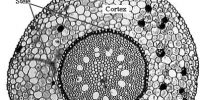Endodermis and epidermis are two cell layers found in the stem and root of the plant. The endodermis is found between the cortex and the vascular tissue. The endodermis represents a unicellular cell layer separating the central cylinder of the root from the cortex. The exodermis represents a unicellular cell layer located at the outer surface of the root directly below the root epidermis. The main difference between endodermis and epidermis is that endodermis is an inner cell layer whereas epidermis is the outermost layer of cells.
Difference between endodermis and exodermis
Endodermis
- The endodermis is the parenchymatic tissue inside the root.
- The endodermis represents a unicellular cell layer separating the central cylinder of the root from the cortex.
- The endodermis controls the flow of water and minerals within the plant. In most plants, this tissue is restricted to the roots.
- It also functions in structural support for the stele, particularly in drying soil, and minimizes shrinkage or swelling of the cells of the stele.
- The endodermis consists of a tightly packed, single layer of cells. It separates the vascular tissues from the cortex.
- Its cells lie in the region of cortex. It is the innermost layer of the cortex. It is also called as a starch sheath. It is a single layer of tightly packed cells.
- Functions: Epidermal cells protect underlying tissues. Cuticle prevents underlying cells from desiccation thus preventing water loss.
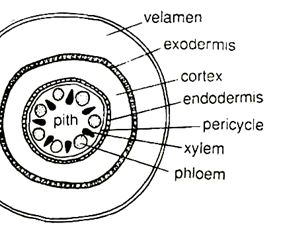
Exodermis
- The exodermis is the other membrane of the root.
- The exodermis represents a unicellular cell layer located at the outer surface of the root directly below the root epidermis.
- The exodermis, forming an ‘outer’ apoplastic barrier at the root surface, mainly establishes the root/soil interface between the root and the soil environment surrounding the root.
- It is a layer of the outer living cortical cells of plants that takes over the functions of the epidermis in roots lacking secondary thickening.
- It is a thick single layer of cells. It is also called the cuticle and protects the plant from water loss and allows gas exchange.
- It is made up of a single layer of closely packed living cells. Most of the time, the walls of epidermal cells are thick and are covered with a thick layer called the cuticle. In some structures, epidermal cells possess special outgrowths called trichomes.
- Functions: These cells store starch. These cells allow solutions to travel from vascular tissue to the cortex.
